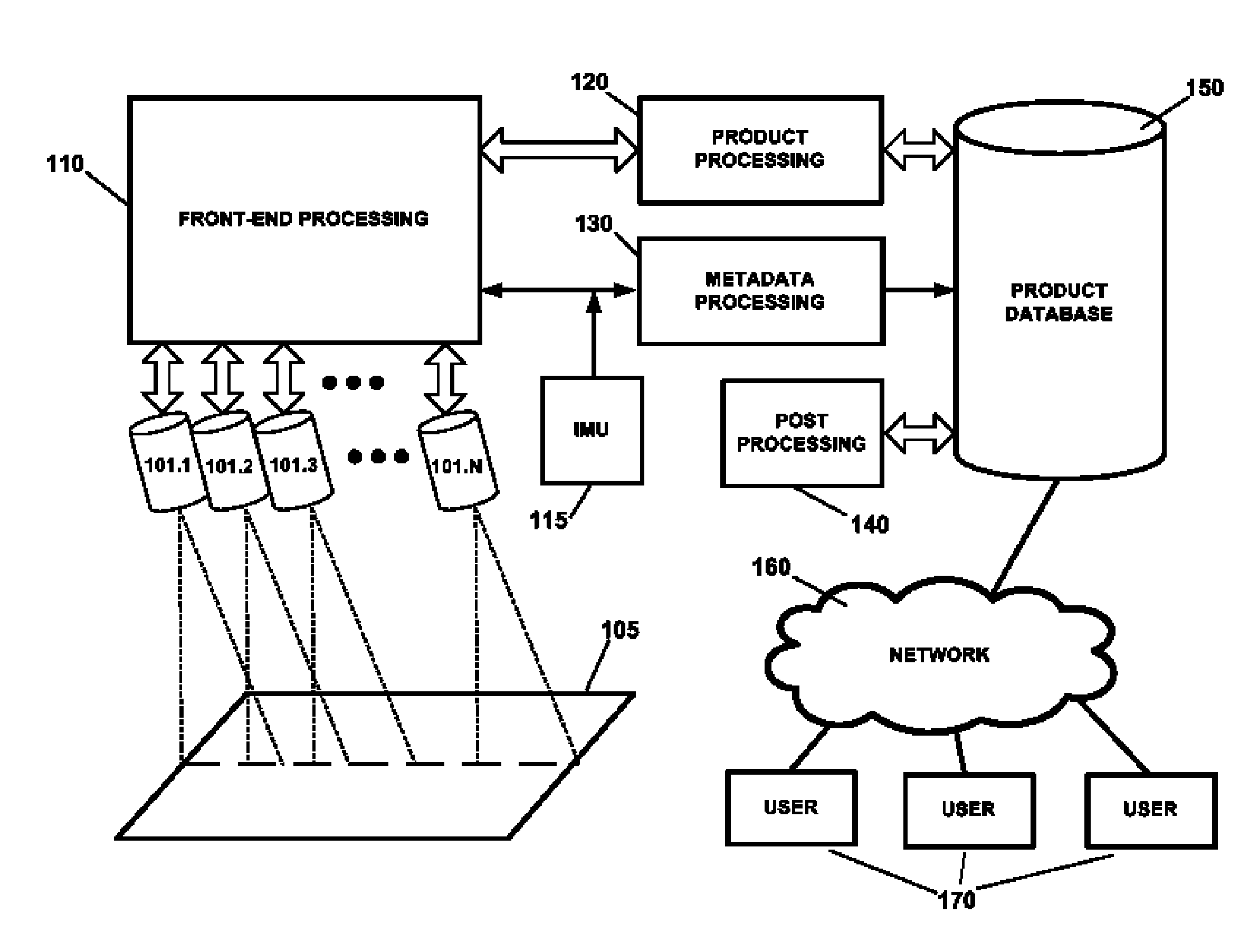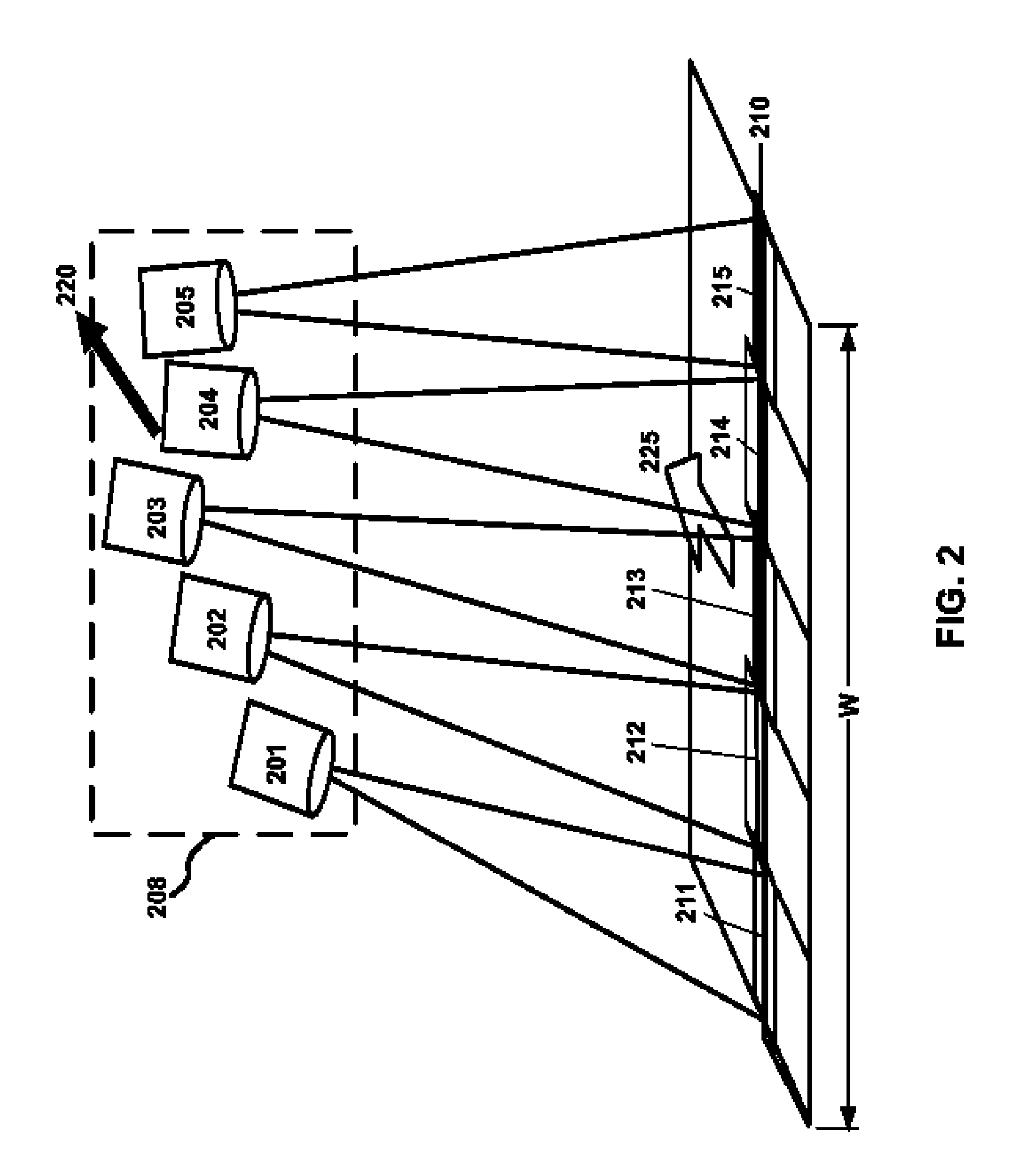Synoptic broad-area remote-sensing via multiple telescopes
a broad-area, multi-telescope technology, applied in the field of remote sensing, can solve the problems of large area coverage, high cost of airborne remote sensors, and limited coverage of sensing systems, and achieve the effect of large area coverage, high acuity, and effective creation of a large virtual array
- Summary
- Abstract
- Description
- Claims
- Application Information
AI Technical Summary
Benefits of technology
Problems solved by technology
Method used
Image
Examples
Embodiment Construction
[0018]FIG. 1 is a block diagram illustrating the operation of an exemplary synoptic remote sensing system in accordance with the present invention. The system depicted in FIG. 1 includes a plurality of optical telescopes 101.1-101.N, each of which includes an array of one or more high-resolution detectors. As described in greater detail below, the telescopes 101 capture images, preferably multi-spectral, of adjacent patches of ground over-flown by an airborne platform onto which the telescopes are mounted. (The term “airborne” as used herein is not meant to be limited to aircraft but is intended to also refer to spacecraft or any other vehicle capable of deployment above the earth's surface.)
[0019] The detectors of the telescopes 101 are coupled to a front-end processing block 110 which performs real-time, electronics processing, such as time delay integration (TDI), calibration, data formatting, transfer and storage, and higher-level functions such as array-to-array registration a...
PUM
 Login to View More
Login to View More Abstract
Description
Claims
Application Information
 Login to View More
Login to View More - R&D
- Intellectual Property
- Life Sciences
- Materials
- Tech Scout
- Unparalleled Data Quality
- Higher Quality Content
- 60% Fewer Hallucinations
Browse by: Latest US Patents, China's latest patents, Technical Efficacy Thesaurus, Application Domain, Technology Topic, Popular Technical Reports.
© 2025 PatSnap. All rights reserved.Legal|Privacy policy|Modern Slavery Act Transparency Statement|Sitemap|About US| Contact US: help@patsnap.com



